The aircraft cabin of the future
What will long-haul flying be like 20 years from now? In this special feature, part of a package – sponsored by Airbus – Flightglobal looks at how aircraft interiors are likely to develop by 2035.
 A leap in connectivity and a blurring of traditional cabin distinctions will define the on-board passenger experience two decades from now
A leap in connectivity and a blurring of traditional cabin distinctions will define the on-board passenger experience two decades from now
The long-haul experience of the mid-2030s will look different from today’s. But while cabin configurations and seating layouts will incorporate more flexibility and personalisation, and tablets and smartphones will force changes in in-flight entertainment (IFE), the biggest shake-up may not be to the cabin itself but, through virtual reality, to how the passenger perceives it.
By the time virtual reality technology has become cheap enough for airlines to deploy on a wide scale, aircraft designers will be working around cabins that have moved on from the first, business, premium economy and economy layout that dominates today.
“The rigid class distinctions that we were seeing 10-plus years ago are now almost gone,” says Ben Orson, managing director of JPA Design London, which recently designed Singapore Airlines’ new premium economy class cabin.
“It may become difficult to define the word class in the future,” agrees Corrin Higgs, cabin marketing manager at Airbus. The manufacturer’s vice president for cabin marketing, Ingo Wuggetzer, adds: “Already we are seeing instances where passengers pay for a special seat with more legroom at a different price or you pay for a window seat at a different price to an aisle seat.”
Social media has made passengers more savvy about ‘good’ and ‘bad’ seats and is helping drive the trend, while airlines may also increasingly offer no-kids or female-only areas, for example.
“We believe airlines will need to build flexibility into their original design and introduce more dynamic cabins to cater for multiple passenger profiles,” agrees Polly Magraw, exhibition manager of the Aircraft Interiors Expo (AIX).
 Credit: JPA Design
Credit: JPA Design
Airlines will introduce more dynamic cabins to cater for multiple passenger profiles
The new categories may not be physically separate zones. Segmentation could take the form of a single-class layout with in-flight entertainment (IFE), connectivity or service levels and control over elements like lighting and temperature. Different prices could be charged according to the choices passengers make.
Zodiac Aerospace believes flexibility is the key to the cabins of the 2030s.
“Everything in the cabin is made for you to stay in your place as much as possible. We thought about an architecture that could enable the movement of passengers,” says Laurent Stritter, Zodiac’s vice president marketing and product strategy.
Qantas agrees: “There could be a change to seating layouts, especially if aircraft are going to operate on longer routes with passengers on board for up to 20 hours, as more space to stand and stretch will be required,” an airline spokesman says.
“Seats will be made even more comfortable with advances in cushioning and the development of more breathable materials with antibacterial properties.”
Zodiac believes the possibilities include futon-style sleeping berths in the cabin crown for economy passengers willing to pay a premium, and family areas or lounges where passengers can socialise.
A more flexible layout paves the way for reviewing the seats themselves and how they are arranged says Airbus’s Wuggetzer.
“Maybe it’s a different seating concept – vertical access. You use the height of the cabin a lot more than we do today – kind of a staggered seating in terms of height, different levels.”
Stritter agrees: “When you’re stuck in a cabin for 12 or more hours, it’s vital that every single inch is available for the passenger.” Zodiac’s Z60 seating concept has a middle seat facing the opposite way to its two neighbours.
“As the boundaries between cabin classes and zones and individual tickets blur, we also come back to the question of seat width variation across the row,” says Higgs.
 Credit: Zodiac Aerospace
Credit: Zodiac Aerospace
Using every inch of space effectively is crucial to ergonomic cabin design, says Zodiac
While Etihad Airways’ First Apartments, Singapore Airlines’ double beds and Emirates Airline’s onboard showers – all on the Airbus A380 – have grabbed attention in recent cabin revamps, the broader aviation industry is turning its back on ultra-luxury, with more room for expansion at the other end of the spectrum.
“The majority of the ultra luxury [offering] out there has absolutely nothing to do with revenue and has everything to do with what the airline wants the brand image to be, says Kent Craver, Boeing’s regional director, cabin experience and revenue analysis.
“The majority of airlines are moving away from ultra premium because it’s not profitable. Business class is already a full sleeper seat with all-aisle access, like a mini-suite and service, food and attention, at a level far beyond first class 30 years ago.”
Instead, by the 2030s, industry experts expect to see demand for a new segmentation within economy class aimed at cost-conscious travellers like students as well as travel-hungry new middle classes from nations set for a population boom, such as India.
More flexible cabin spaces also open up new possibilities for IFE. The proliferation of tablets, smartphones and other devices – passengers now bring two or three on board, on average – is already affecting how airlines and manufacturers approach IFE. By the 2030s, the two will be even more closely entwined.
Axel Becker, manager of trend research at Airbus, believes mobile devices will not supersede onboard IFE entirely. “It will be complemented – a much broader spectrum of possible applications and solutions.”
“Assuming that embedded IFE systems either diminish in scale or disappear completely, then this will afford us a lot of extra freedoms to define new cabin spaces,” says JPA Design’s Orson.
More tablets and smartphones will even affect seat design, says Zodiac’s Stritter: “[Passengers] will need to recharge their devices and to allow a proper positioning of the tablet in the seat so that you don’t spend hours watching a video with your head bent creating tension in your neck, but instead have a tablet that’s positioned at the right level with a nice holder.”
Future IFE systems could be linked up to galleys, allowing some passengers to pre-order meals that they pick up themselves, something that has been pioneered by some airlines already.
 Credit: JPA Design
Credit: JPA Design
Lighting has a huge impact on space perception
Across the cabin, by the 2030s, lighting – along with IFE and differing levels of service – will help airlines looking to create different segments in a space without physical divisions.
“You can use lighting as a tool to create the right ambience for boarding, dining, sleeping,” says Wuggetzer. “Lighting has a huge impact on space perception and the passenger experience, and it is a fantastic tool for branding.”
Lighting could also help ease the effects of jet lag, Wuggetzer says. “On the ground you already use light therapy for medication purposes, creating an artificial sunrise or sunset. Mood lighting can definitely influence the perceived time difference .”
Qantas agrees: “Cabin interiors could be improved, so that lighting, heating and cooling work together to create a more natural environment and enable customers to better regulate their body rhythm and reduce jet lag,” the spokesman says.
Zodiac expects airlines to incorporate technology that allows passengers to control their immediate environment.
“If you want to rest or enjoy the entertainment or work on your own, or work with a companion nearby, you have totally different needs in terms of posture, amenities, lighting, temperature,” Stritter says.
But eventually airlines will have to look beyond the physical.
“If you want to move to the next step you have to get into the passenger experience,” says Stritter. “There’s some leverage on sensory experience – how passengers can control every single aspect of their environment – the sound, the light, the temperature, the smell.”
Boeing’s Craver agrees: “I think that we’re probably getting close to the limit, particularly in economy class, of how many more seats we can add into an airplane. I think the real groundbreaking items in passenger experience are going to come in the psychological realm,” he says.
“We, as humans, perceive space in a multitude of ways and if we can do things from a perception standpoint that gives you a feeling of more space, that may be where we can continue to gain ground.”
Qantas believes virtual reality technology could give passengers a whole new sensory experience. “For example, while they are watching a film on board, customers could be virtually transported to be sitting in a real movie cinema, or even simulate lying on a beach,” the spokesman says.
Blake Emery, Boeing’s director of differentiation strategy, adds: “I think by that time I wouldn’t be surprised if some kind of technology has matured enough that the economy class passenger will have some technological means of being transported somewhere else. We fool the brain so that the body thinks it’s somewhere else. The technology is at a developmental and an experimental stage. But the strides that are being made are really great.”
While the technology is already being used to train footballers, for example, for now the cost would be prohibitive for airlines.
“Fifteen years out, I think this is going to be real,” Emery says. “You could be in a nice large room, or on a beach. There’s already work being done on how you would account for turbulence or for somebody bumping into you. Currently some of those issues aren’t 100% solved but the progress being made is great.”
Systems involving electrode therapy that would alter passenger perceptions are a possibility too, Emery says.
“We’re thinking about allowing the passenger to escape from the cabin and experience something like walking in the rainforest for a couple of hours. There could also be some opportunities for additional revenues for the airline to create spaces where people can book a couple of hours for a peaceful and relaxing experience,” says Zodiac’s Stritter.
Airbus agrees: “It could be, for example, having a technology zone on board an aircraft where people are allowed to use these kinds of headsets – there will need to be some rules in place,” says Wuggetzer.
“These technologies will have a significant impact on the cabins of the future, and it is up to us to truly understand and thus exploit their potential to shape the next generation cabin experience.”

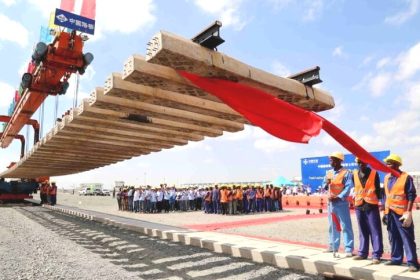 AfDB puts up nearly $700m for Burundi-Tanzania SGR link
AfDB puts up nearly $700m for Burundi-Tanzania SGR link
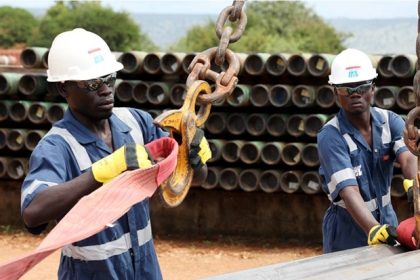 Bank of Uganda keeps base rate at 9.5% to support surge in GDP growth
Bank of Uganda keeps base rate at 9.5% to support surge in GDP growth
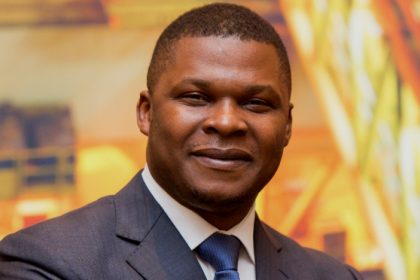 Africans must resist being bulldozed in energy transition timetable debate
Africans must resist being bulldozed in energy transition timetable debate
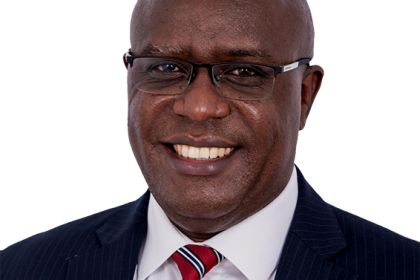 Standard Bank Group appoints new Chief Executive for Uganda Holdings
Standard Bank Group appoints new Chief Executive for Uganda Holdings
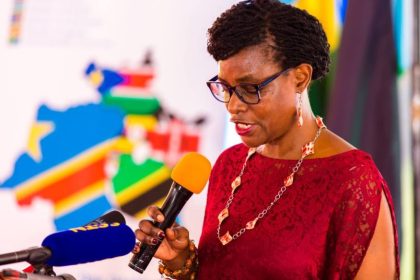 TradeMark Africa introduces new App to limit EAC trade barriers
TradeMark Africa introduces new App to limit EAC trade barriers
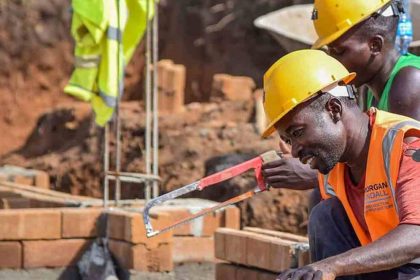 Employer hiring up during November as Stanbic PMI rises to 53.4
Employer hiring up during November as Stanbic PMI rises to 53.4
